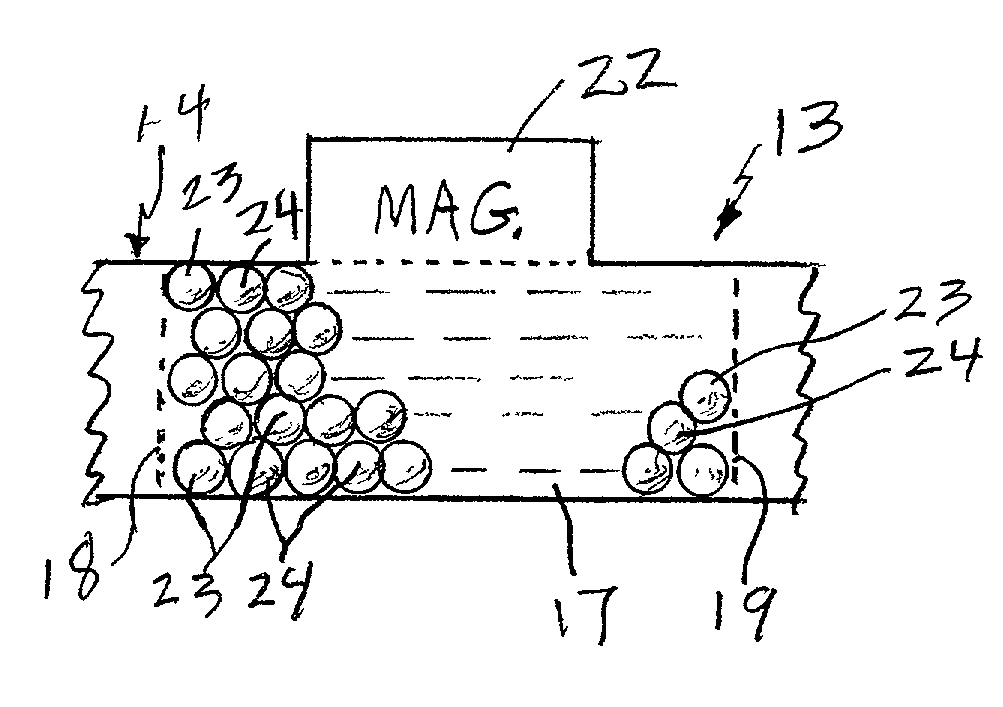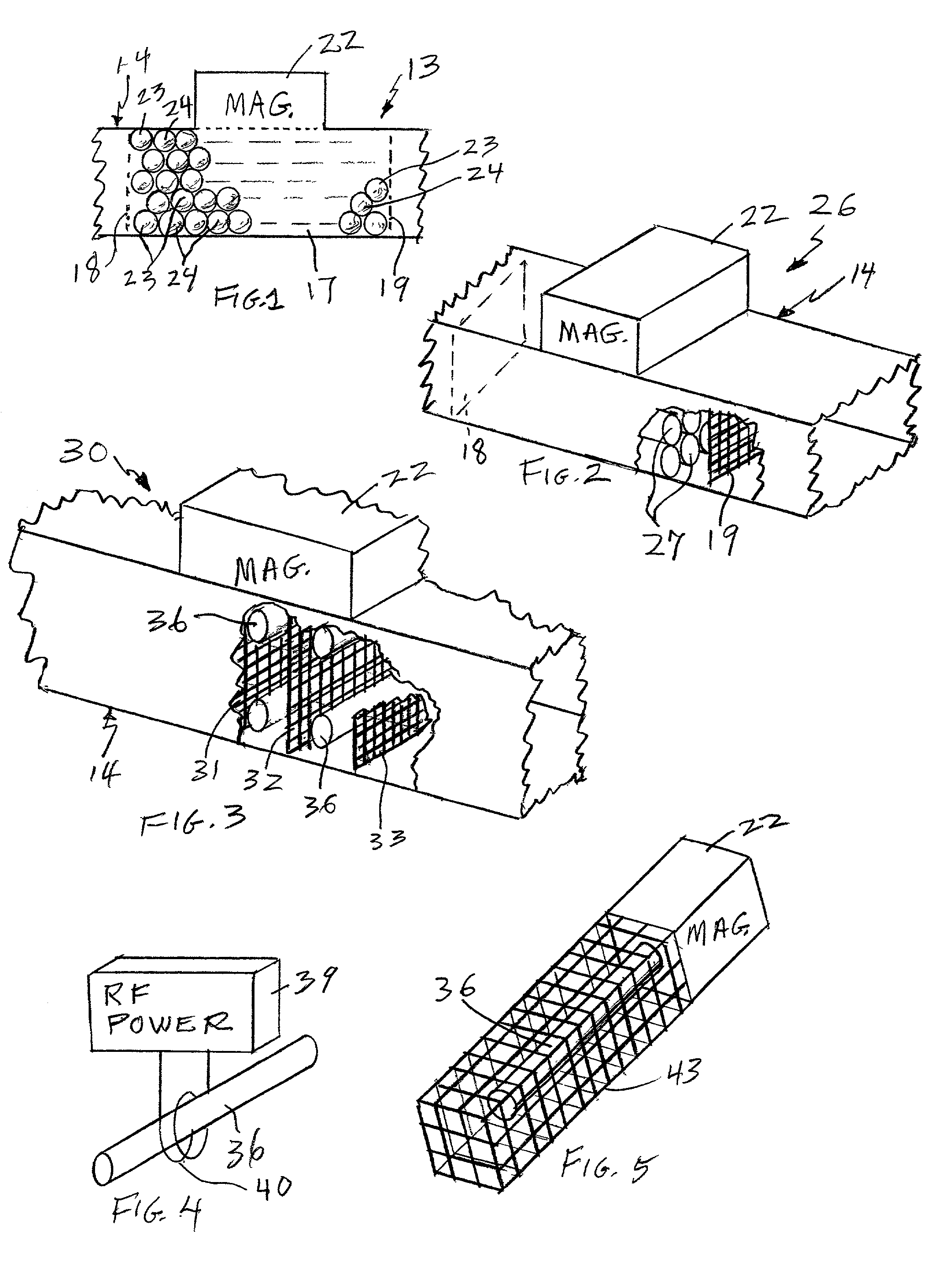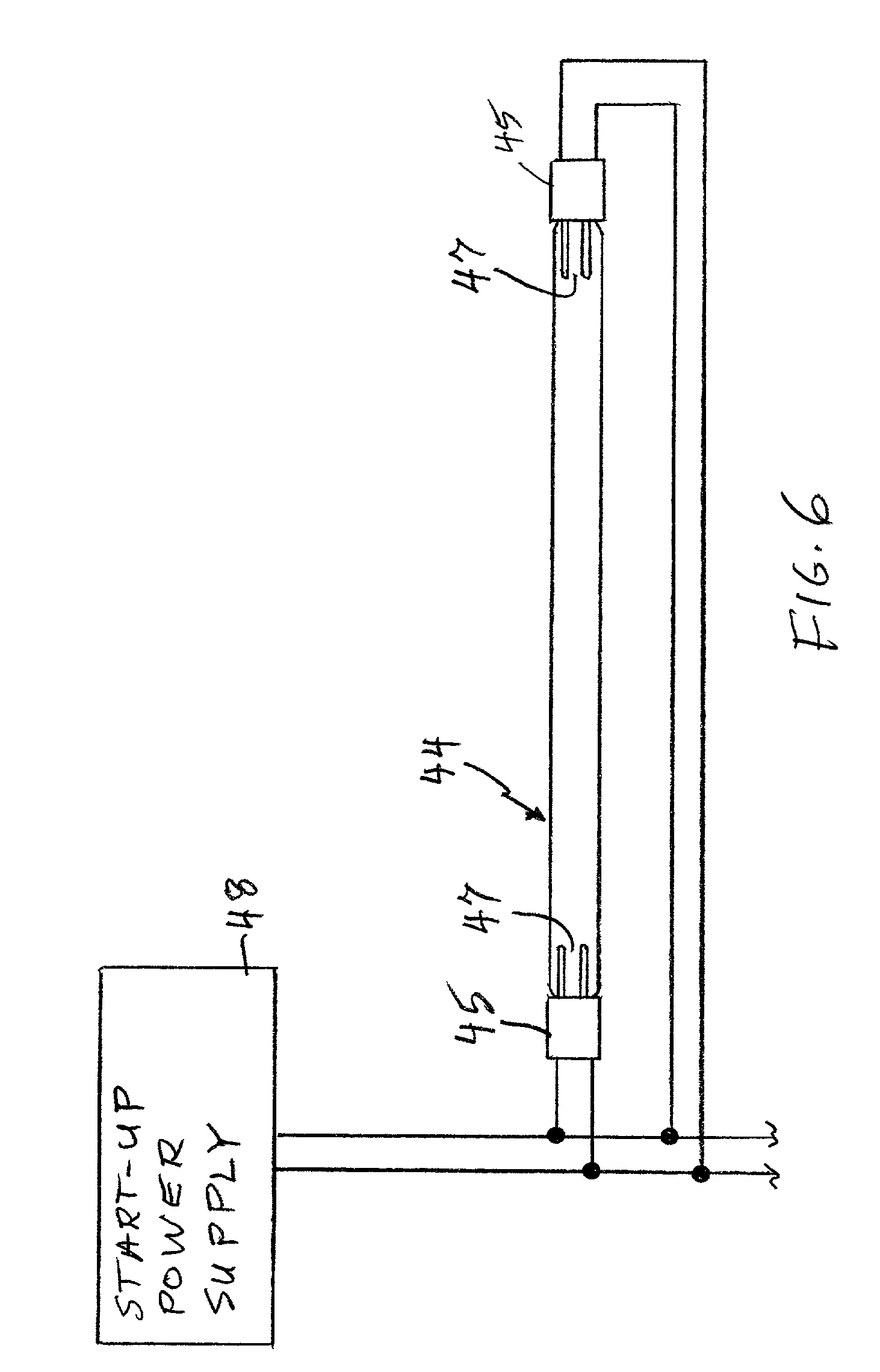Electrodeless ultraviolet discharge fluid remediation
a technology of ultraviolet discharge fluid and electrodeless technology, which is applied in the direction of water/sewage treatment by oxidation, physical/chemical process catalysts, separation processes, etc., can solve the problems of imposing a limit on the degree of freedom available to the design, unnecessarily large design volume, dimly irradiated, etc., to improve the freedom of independent control, simplify the apparatus, and increase the freedom
- Summary
- Abstract
- Description
- Claims
- Application Information
AI Technical Summary
Benefits of technology
Problems solved by technology
Method used
Image
Examples
Embodiment Construction
[0018]In FIG. 1, a fluid remediation zone 13 is formed within a duct 14 which comprises microwave reflecting material. At each end of a finite space 17, microwave reflectors 18, 19, which are permeable to the fluid in the duct 14, form a resonant microwave cavity. A magnetron 22 provides microwave electromagnetic radiation into the cavity. Within the cavity are spheres 23, 24. The spheres 23, 24 may all comprise spherical electrodeless microwave lamps, in which case the fluid remediation zone of FIG. 1 operates to wholly or partially destroy microorganisms by means of ultraviolet radiation alone. On the other hand, in accordance with the invention, the spheres 23 may comprise spherical electrodeless ultraviolet lamps and the spheres 24 may be non-lamp spheres having an ultraviolet-activated photocatalyst surfaces, in which case the fluid remediation zone of FIG. 1 utilizes photocatalyst reaction with the fluid to remediate the fluid in some fashion, such as to oxidize or reduce orga...
PUM
| Property | Measurement | Unit |
|---|---|---|
| transparent | aaaaa | aaaaa |
| electromagnetic radiation | aaaaa | aaaaa |
| volume | aaaaa | aaaaa |
Abstract
Description
Claims
Application Information
 Login to View More
Login to View More - R&D
- Intellectual Property
- Life Sciences
- Materials
- Tech Scout
- Unparalleled Data Quality
- Higher Quality Content
- 60% Fewer Hallucinations
Browse by: Latest US Patents, China's latest patents, Technical Efficacy Thesaurus, Application Domain, Technology Topic, Popular Technical Reports.
© 2025 PatSnap. All rights reserved.Legal|Privacy policy|Modern Slavery Act Transparency Statement|Sitemap|About US| Contact US: help@patsnap.com



